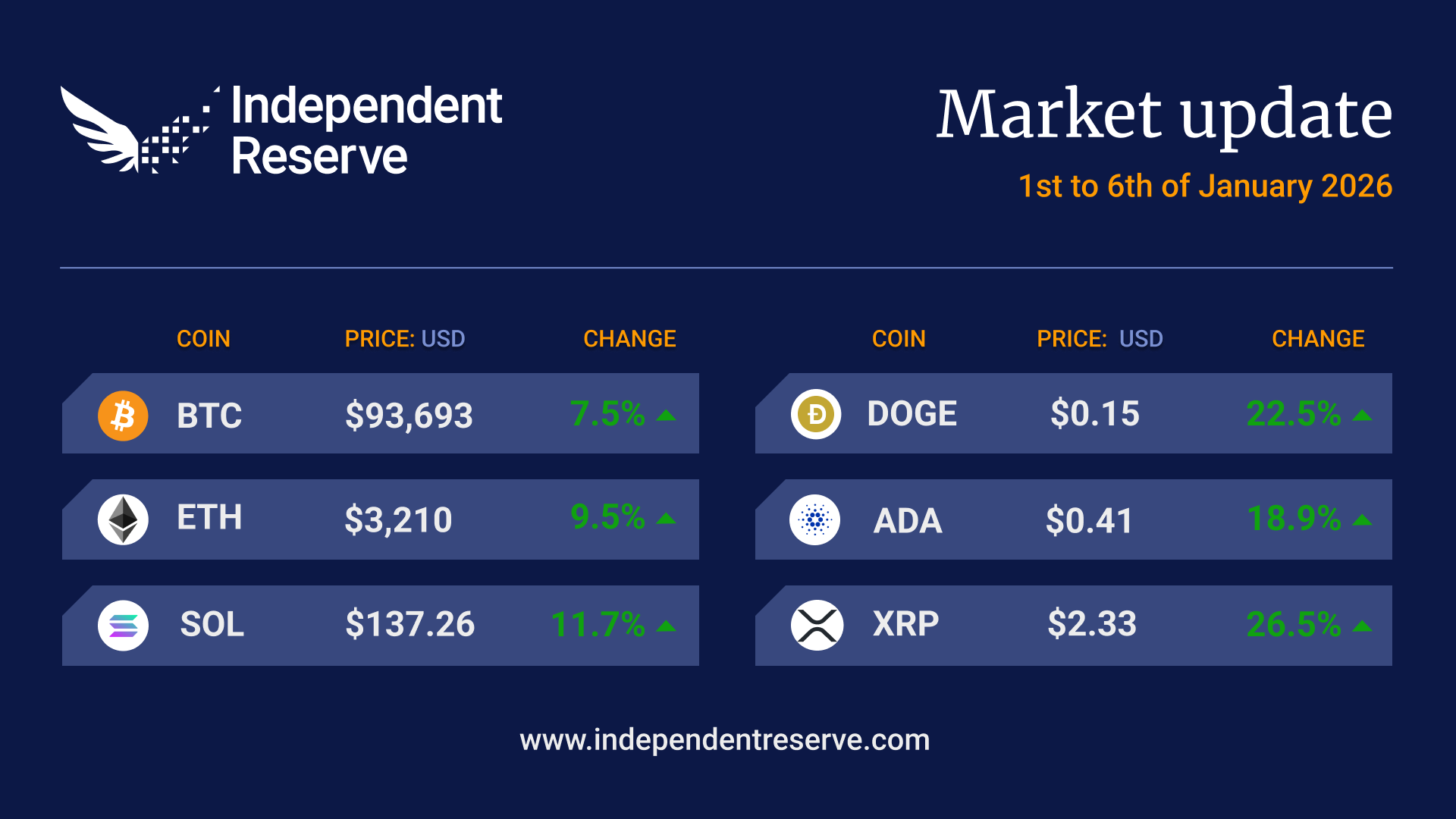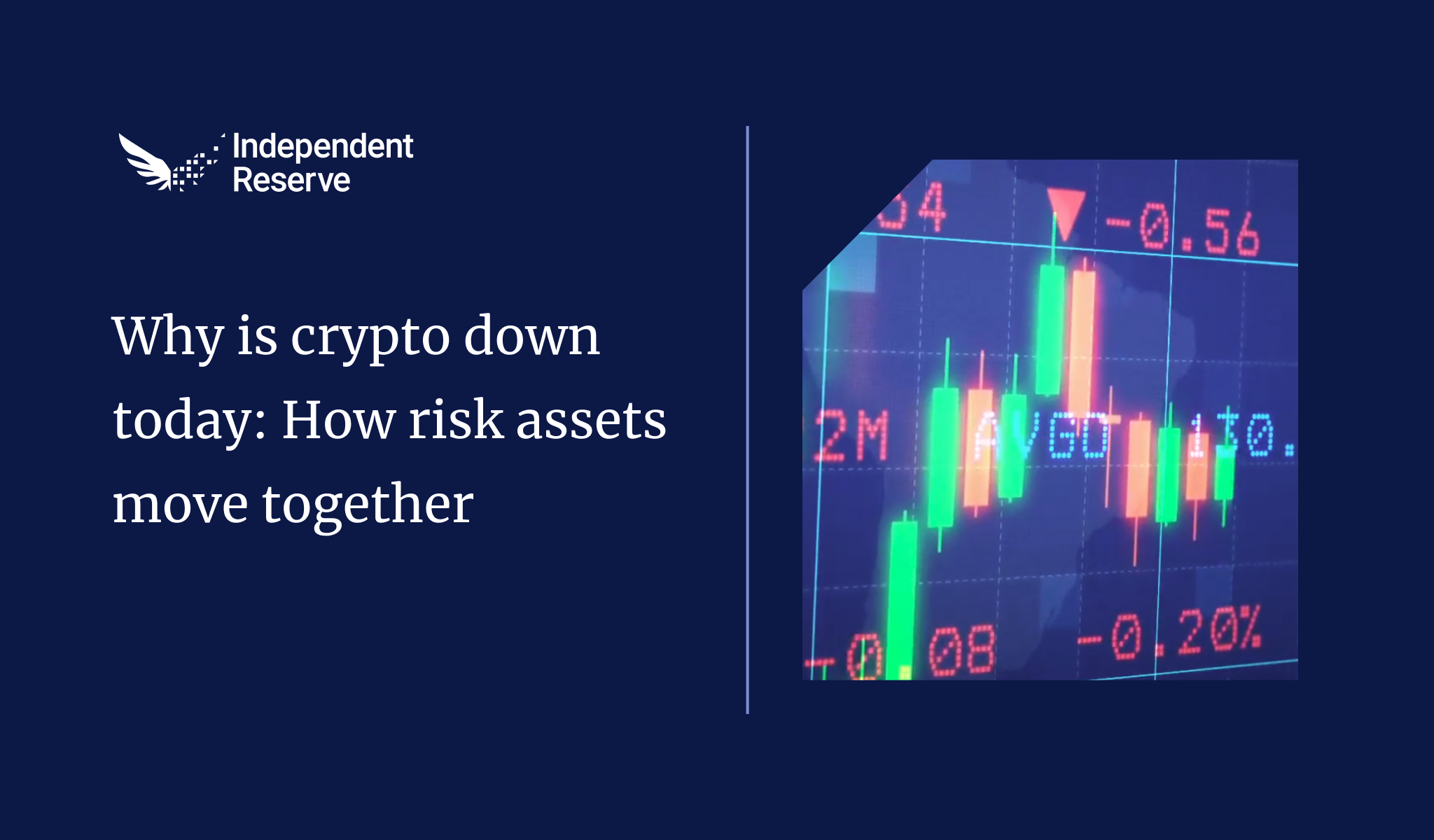In Markets
Bitcoin traded between approximately A$44K (US$33K) and A$48K (US$36K) this week, finishing pretty much flat on seven days ago at A$45,200 (US$34K) at the time of writing. With the London hard fork just around the corner and Eth2 deposit contract filling up, Ethereum is looking very solid and gained 7.8% to trade around A$2,970 (US$2,250). Overall, there was more green than red, with DeFi coins surging: Uniswap was up 16.4%, Aave (39.3%), Compound (62.2%) and Synthetix (60.2%). Ripple increased 3.5%, Cardano (7.9%), Bitcoin Cash (2.6%), Litecoin (2.2%). Chainlink was flat, Polkadot lost 1.7% and Stellar was down 2.2%. The Bitcoin hashrate bottomed out at 59 EH/S during the week, but the average rate was 87.9 EH/s which is about where we are right now. The Crypto Fear and Greed Index is at 29 (fear).
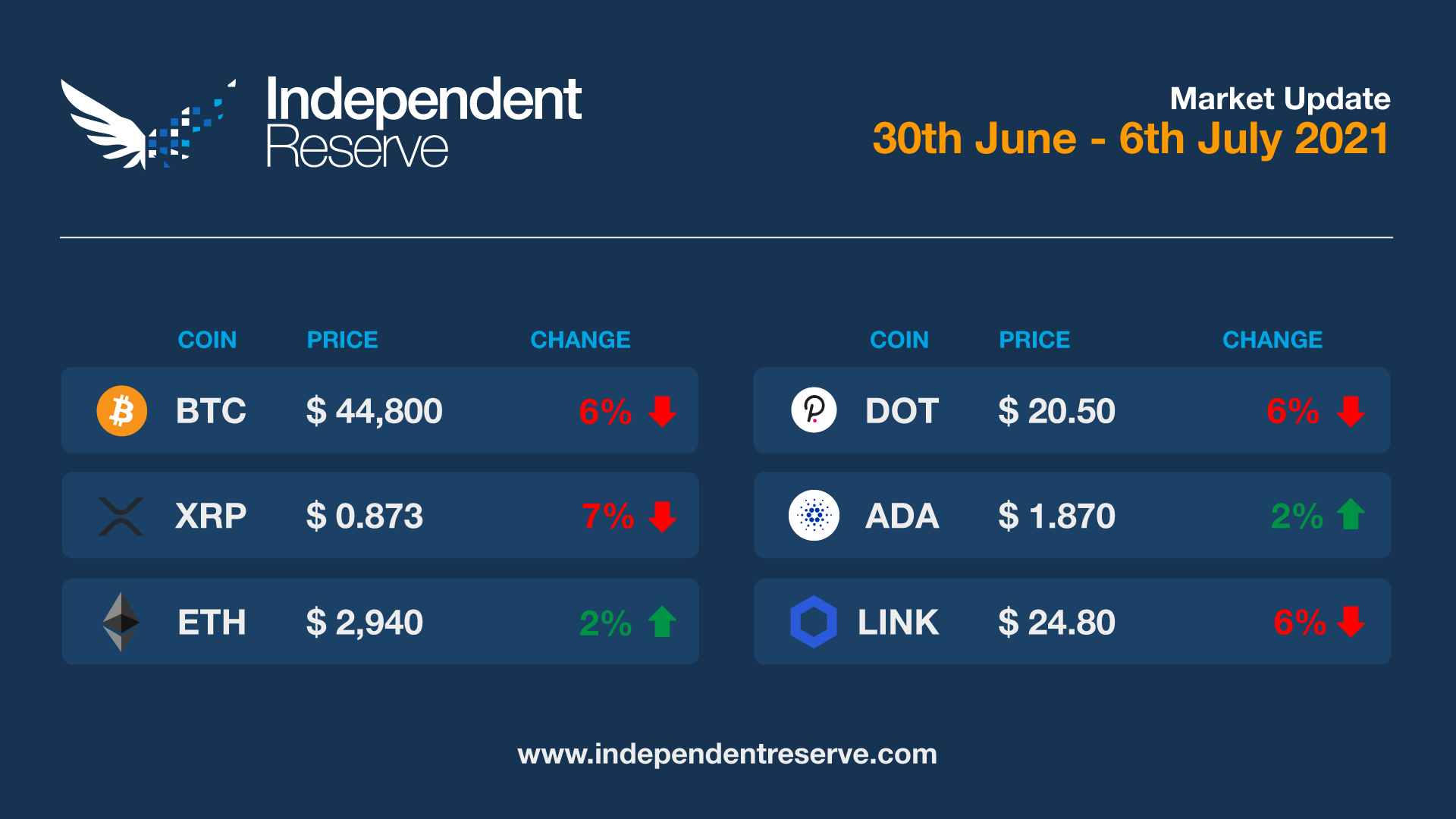
In Headlines
Ease of mining increasing
This week saw the biggest single mining difficulty drop in Bitcoin’s history when it adjusted 27.9% down. The network adjusts its difficulty every 2,016 blocks to ensure a new block is produced every 10 minutes or so regardless of how much computing equipment is dedicated to mining. With miners switching off in China and moving it’s been a volatile period, but this self-correcting mechanism is one of the reasons Bitcoin is so bomb proof.
Powering ahead
The Bitcoin Mining Council estimates that Bitcoin mining worldwide uses 56% renewable energy… however the estimate was extrapolated from a three-question survey of just one third of miners. While self-reported data is unlikely to convince Elon Musk to reenable BTC payments for Teslas, the miners have committed to backing this initial estimate with verifiable data. If they can, it would make Bitcoin mining “one of the most sustainable industries globally” according to the council.
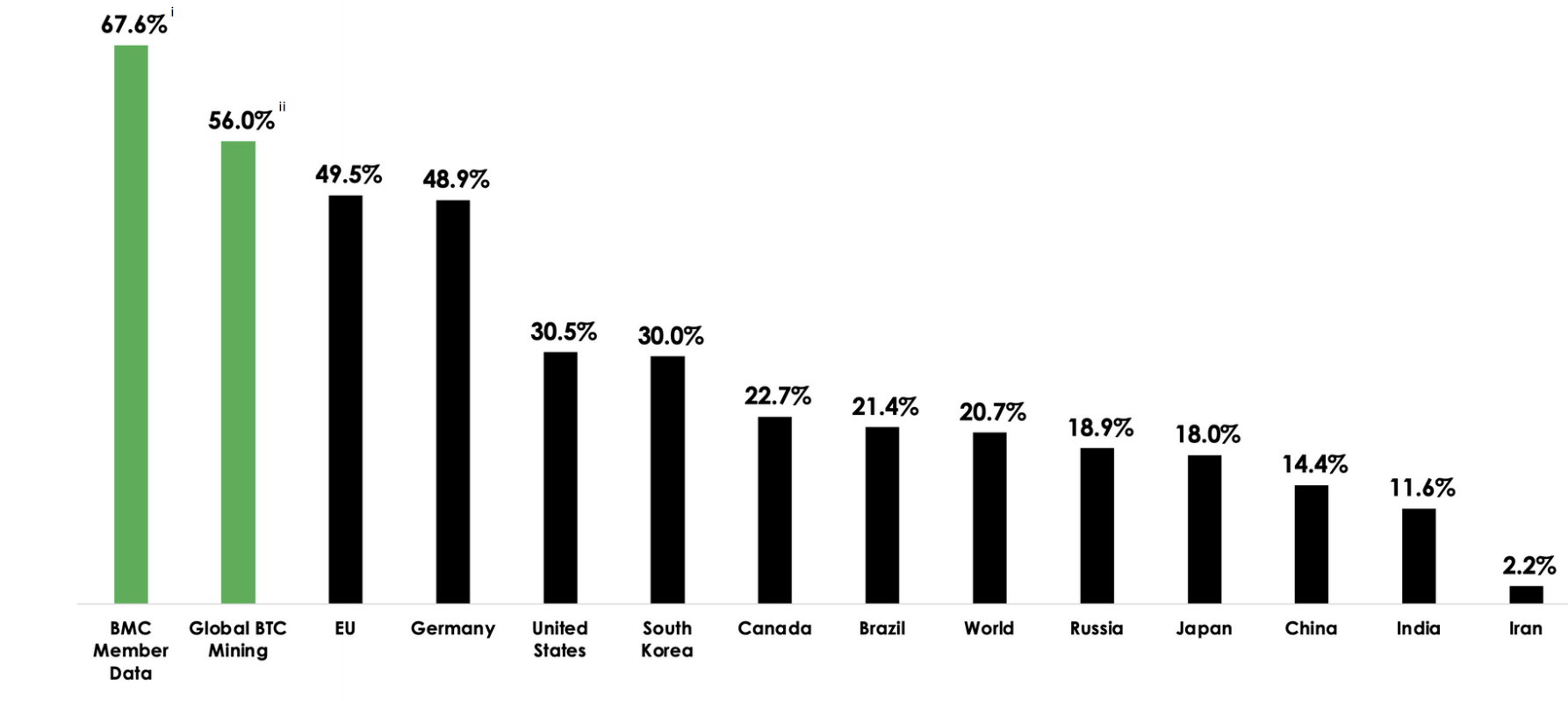
Takes a licking, keeps on ticking
Travis Kling, who operates the Ikigai crypto asset fund has put together a timeline of what he calls “the most aggressive sovereign assault on Bitcoin ever”. His graphic highlights 25 FUD announcements and news stories related to China’s crypto crackdown in June. He said it was “A massive concerted effort from China. Yet here we are, making blocks & trading $33K (A$44K).” An alternate take came from UBS, which is warning its big clients that Bitcoin is unsuitable for professional investors due to China’s crackdown and the threat of regulations in the US and UK. In a note to clients it said: “We’ve long warned that shifting investor sentiment or regulatory crackdowns could pop bubble-like crypto markets”.
A lot at stake
JPMorgan released a “primer on staking” this week as a guide for their institutional clients to “the fast growing opportunity” opening up. “We estimate that staking is currently a $9 billion business (A$11.9B) for the crypto economy, will grow to $20B (A$26.5B) following the Ethereum merge and could get to $40B (A$53B) by 2025.” It highlighted that the returns are good regardless of the volatility of the underlying assets. Aave has signaled it will launch an institutions-focused platform called Aave Pro later this month.
Ethereum hard fork on August 4?
Ethereum’s devs are due to hold a meeting later this week to discuss the date for the London hard fork. Influencer Anthony Sassano is tipping August 4, but concedes it could be a couple of weeks later. The hard fork will implement EIP-1559 which will help deal with congestion on the blockchain by implementing dynamic block sizes. It will also make transaction fees more predictable, and burn some of them (which may at some point cause deflation of the supply). Ethereum’s active addresses have surpassed Bitcoin’s a number of times in the past month (due mainly due to a 38% fall in BTC’s active addresses over three months), and the percentage of ETH held on exchanges is at the lowest point since November 2018. More than 6 million ETH is now locked in the Eth2 staking contract.
Australia is ready
Australia is the eighth most crypto ready country in the world according to a new study. The chart looked at the number of Google searches for crypto, the number of Bitcoin ATMs as well as local regulations and tax laws. On those metrics the US came in at number one, followed by Cyprus, Singapore, Hong Kong and the UK.
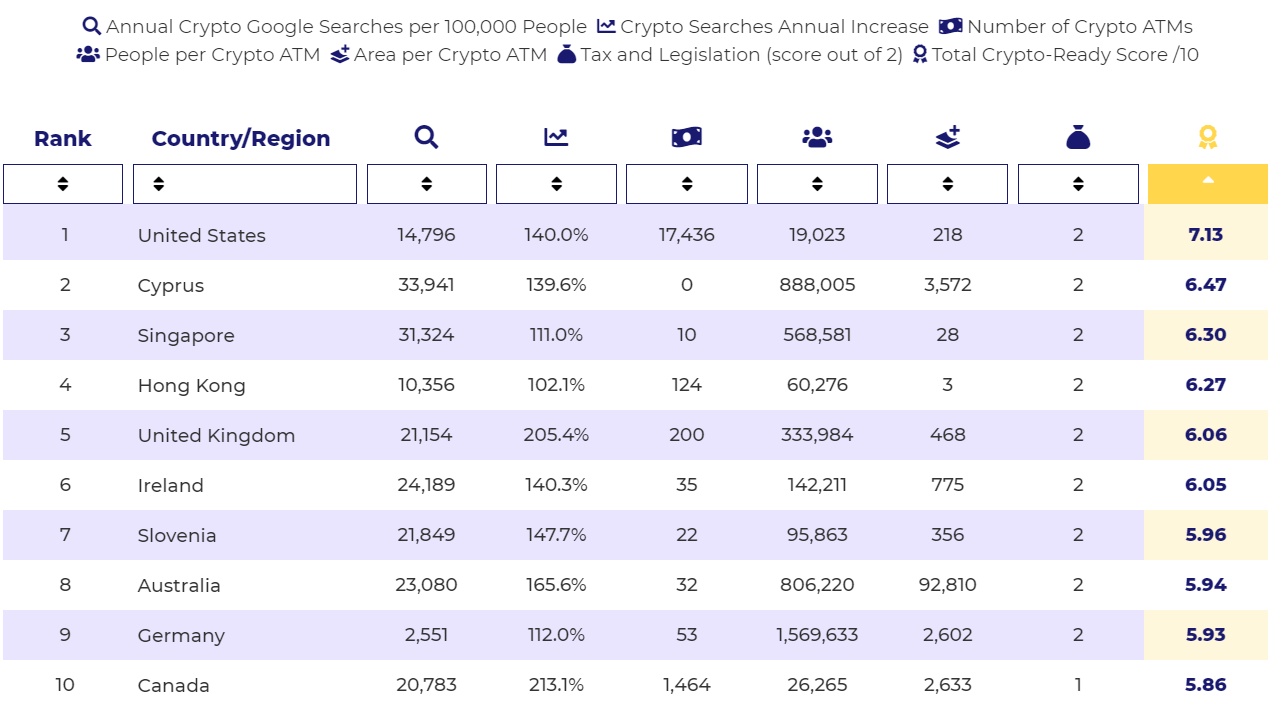
Bear season not indicated
Analyst Willy Woo told podcaster Peter McCormack that we’re not in a bear market, on-chain indicators are signaling a recovery, and “Rick Astley” buyers are hodling.‘The Rick Astley’ is a term in the crypto community describing investors that hold but never tend to sell. However these holders were very active throughout 2021, and as such coins have moved away from “Rick to the weak hands – the speculative traders that buy and sell”. Furthering on this, Woo states that a crossover back to Rick’s hands is occurring. On-chain analyser Santiment also notes that the supply of Bitcoin on exchanges has steadily fallen as it is increasingly secured by long-term holders.
Bullish news reported bearishly
A CNBC survey of 100 Wall Street Chief Investment Officers found that around 44% believe Bitcoin will close 2022 beneath U$30K (A$39.8K). For some reason this has been widely reported as bearish news, despite the fact that the majority (56%) of respondents think it will be much higher. A quarter tipped U$40K ($53K), a quarter tipped U$50K (A$66.3K) and 6% think Bitcoin will close 2021 above $60K (A$79.5%). The survey came in the same week that German ‘spezialfonds‘ became authorised to invest up to 20% of their portfolios in digital assets, which equates to around US$415 billion.
UK to explore CBDC
UK’s Chancellor of the Exchequer (Chief Financial Minister), Rishi Sunak, has placed cryptocurrencies on a list of financial reforms for the government to explore in the coming years. Officials are to consult on the “safe adoption of crypto assets and stablecoins” as well look at the case for a Bank of England-issued CBDC (Central Bank Digital Currency). These recommendations are in aid to establish the country as a center of fintech innovation and business.
Wyoming wants miners
With the ongoing crypto miner repression in China, the companies behind the operations are actively seeking to relocate to more welcoming jurisdictions. Wyoming, which has maintained a positive attitude towards cryptocurrencies, is looking to be the next top hub spot for mining. Pro-Bitcoin Senator Cynthia Lummis has sent an open invitation to miners via social media whilst recently defending Bitcoin’s carbon footprint in an interview.
Referring to research conducted at the University of Cambridge, Bitcoin mining uses roughly 40% renewable energy while the traditional economy is currently estimated to use only 12% renewables. Senator Lummis went on to say, “Bitcoin mining is already more environmentally adapted to non-carbon emitting energy sources”, referencing innovation occurring in her energy-rich state of Wyoming. Bitcoin miners are helping to utilise the gas that would otherwise be expelled into the atmosphere with mobile mining platforms – keeping carbon out of the air while using it to produce another product in the form of Bitcoin.
Until next week, happy trading!

